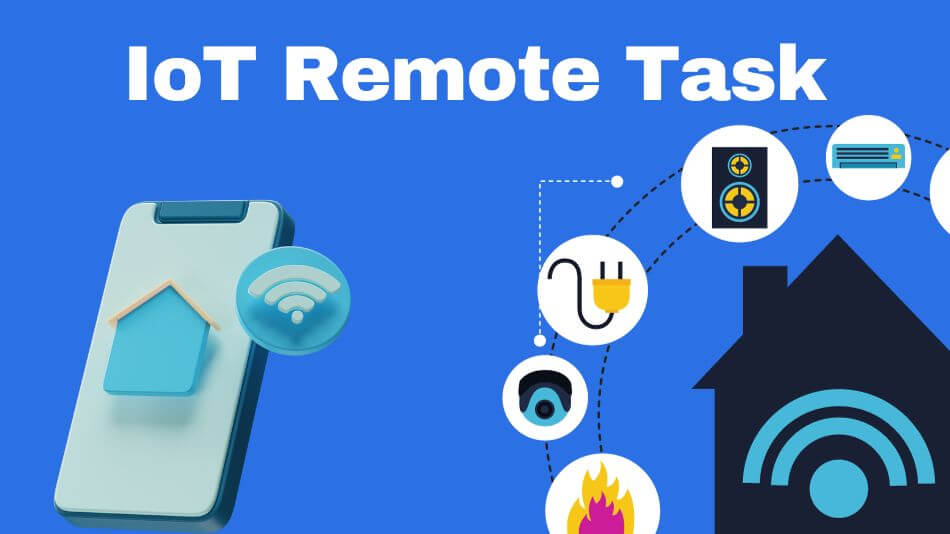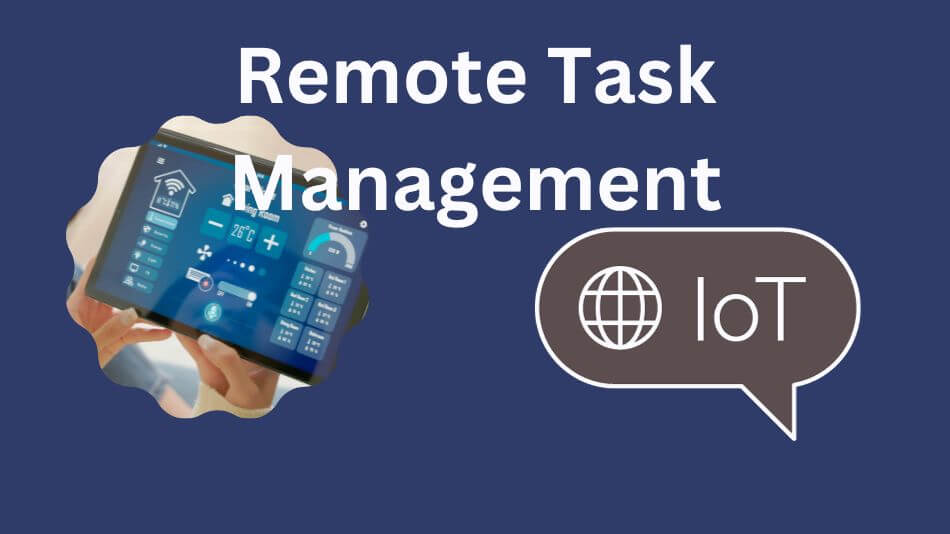Introduction

Today’s fast-moving digital landscape features the Internet of Things (IoT), a beacon of innovation that serves businesses by streamlining operations, increasing productivity and cutting costs.
IoT-remote task management has emerged as a transformative force, helping organizations streamline operations while increasing productivity and cutting costs.
In this comprehensive guide, we’ll explore this space, covering its real-world applications, benefits and best practices so you have a thorough understanding of how IoT remote task management can empower your organization.
The Essence of IoT Remote Task Management
https://youtu.be/1GcMAiIMQYU?si=SEmg2yuK7W6-nbi1
What Exactly Is IoT Remote Task Management?

IoT remote task management is a tech-driven strategy that utilizes interconnected devices and sensors to remotely oversee, control, and optimize various tasks and processes.
The technique relies on gathering data from IoT-enabled devices before using these insights to make informed decisions and implement action.
How Does IoT Remote Task Management Operate?
At the outset, this process begins by installing Internet of Things devices such as sensors, cameras, and actuators in strategic locations where remote task management is necessary.
Once deployed, these devices continuously collect data that is sent back to a central system, where it undergoes advanced analytics and artificial intelligence algorithms for processing before providing real-time insights.
Decision-makers can monitor tasks remotely, make necessary adjustments, and even automate actions according to predefined rules.
Essential Components of IoT Remote Task Management
- IoT Devices: These physical devices and sensors collect data, including temperature, GPS, motion, and more.
- Connectivity: Reliable connectivity, often through Wi-Fi or cellular networks, is crucial for data transmission from devices to the central system.
- Centralized Control: A central system or platform manages and processes data received from IoT devices, providing a user-friendly interface for task monitoring and control.
- Analytics and AI: Advanced analytics and AI algorithms analyze data in real-time, offering actionable insights and enabling automation.
- User Interfaces: User-friendly dashboards and applications enable users to interact with the system, receive alerts, and make decisions.
Practical Applications of IoT Remote Task Management

Manufacturing and Industrial Operations
IoT remote task management revolutionizes manufacturing and industrial settings by enabling predictive maintenance, reducing downtime, and cutting maintenance costs.
Agriculture
In agriculture, IoT-remote task management facilitates precision farming, monitoring soil conditions, weather patterns, and crop health for optimized irrigation, fertilization, and pest control.
Healthcare
IoT remote task management has revolutionized healthcare by remotely monitoring patients’ vital signs, tracking medication adherence, and ensuring patient safety within their homes.
Smart Cities
Smart cities leverage IoT-remote task management to optimize transportation, reduce energy consumption, and enhance public safety.
Logistics and Supply Chain
IoT-remote task management offers real-time tracking and condition monitoring for goods in transit, reducing theft and ensuring timely deliveries in logistics and supply chain management.
The Advantages of IoT-Remote Task Management
Enhanced Efficiency
IoT-remote task management provides real-time data and insights, enabling organizations to optimize processes and make informed decisions swiftly.
Cost Savings
Predictive maintenance and optimized resource allocation through IoT remote task management result in significant cost reductions, including reduced downtime, maintenance expenses, and energy consumption.
Augmented Safety
In sectors like manufacturing and healthcare, remote monitoring enhances safety by promptly identifying and addressing potential hazards.
Greater Accessibility
IoT-remote task management allows businesses to monitor and manage tasks from anywhere, providing flexibility and convenience.
Best Practices for Implementing IoT-Remote Task Management
Define Clear Objectives
Before implementing IoT-remote task management, establish clear objectives and key performance indicators (KPIs) to gauge its success.
Select the Right IoT Devices
Choose IoT devices that align with your specific requirements and environment, considering factors like durability, battery life, and data accuracy.
Prioritize Data Security
Implement robust security measures to safeguard data transmitted by IoT devices, including encryption, access controls, and regular security audits.
Scalability
Opt for a scalable solution capable of growing with your organization’s evolving needs, accommodating an increasing number of devices and data.
Employee Training
Offer comprehensive training to employees interacting with the IoT remote task management system to maximize its benefits.
Frequently Asked Questions
Q1: Can IoT-remote task management be beneficial for small businesses?
A1: Absolutely! IoT-remote task management is scalable and can be tailored to the needs and budget of small businesses, providing them with efficiency and cost-saving benefits.
Q2: How is data privacy addressed in IoT remote task management?
A2: Data privacy is a valid concern. Implement robust security measures, including encryption and access controls, to protect sensitive data and adhere to data protection regulations.
Q3: Which industries can benefit most from IoT remote task management?
A3: Virtually every industry can benefit from IoT remote task management, but manufacturing, healthcare, agriculture, logistics, and smart cities have experienced significant advantages.
Conclusion
IoT remote task management is reshaping the operational landscape for businesses of all sizes.
By taking advantage of IoT-remote task management’s numerous applications and undeniable benefits, adopting this technology has become essential to remaining competitive in today’s digital environment. So, are you ready to harness its power for your organization?
